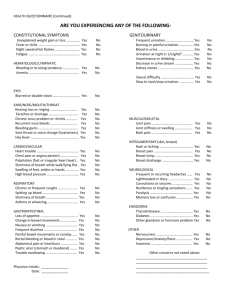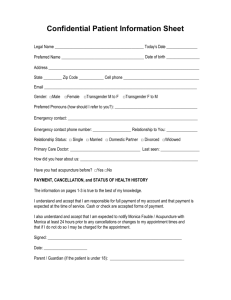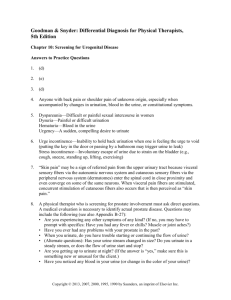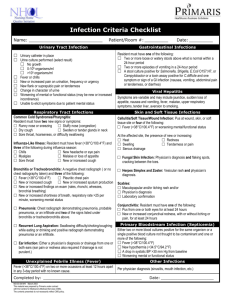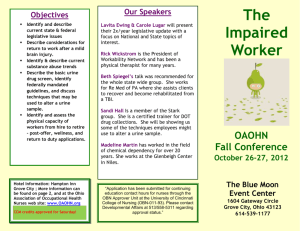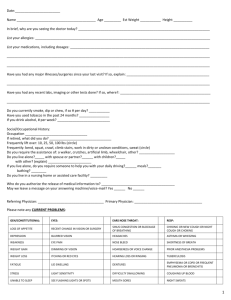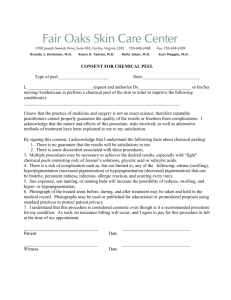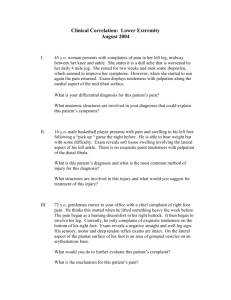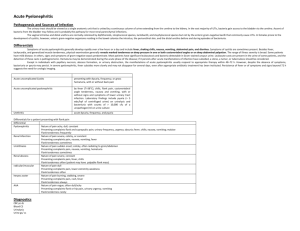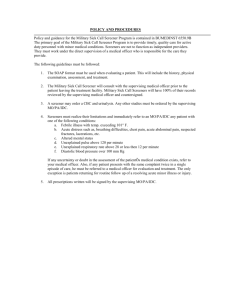Word: 30KB/3 pages - Minnesota Department of Health
advertisement
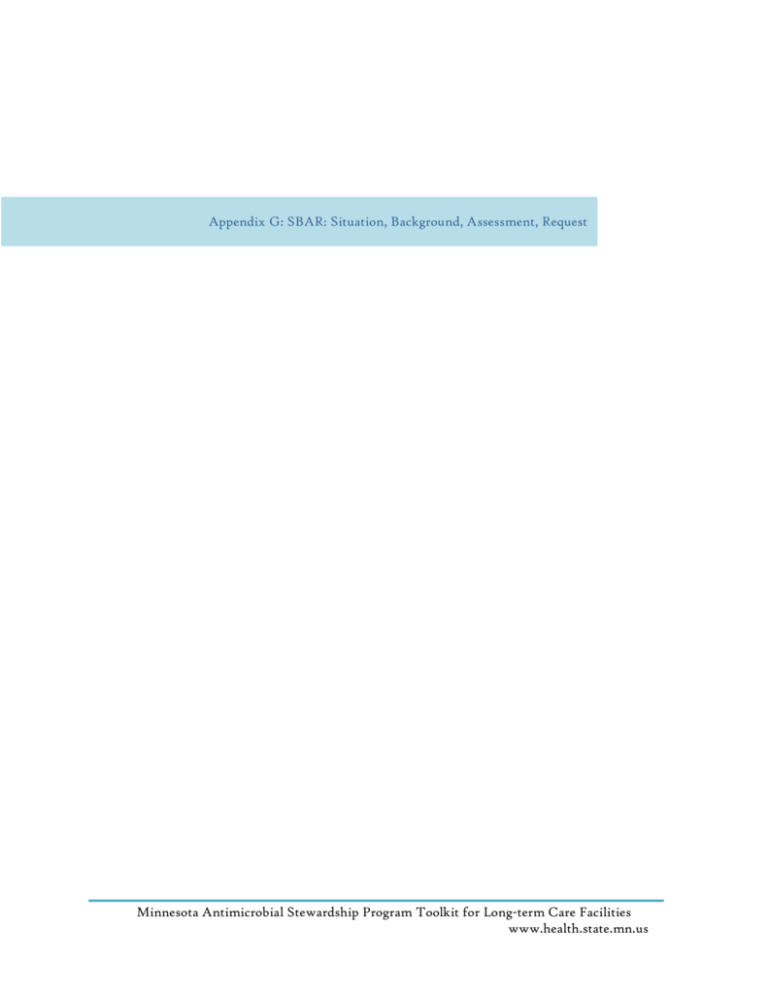
Appendix G: SBAR: Situation, Background, Assessment, Request Minnesota Antimicrobial Stewardship Program Toolkit for Long-term Care Facilities www.health.state.mn.us When calling the primary or on-call provider, consider the following changes in condition. Communicate those that are present and not present to facilitate accurate and effective clinical decision making. SBAR Physician/ NP Communication Resident Name: ________________________________ DOB: ______________ Unit/Room: ___________________________________ Situation: Reason for the call (e.g., change in condition); include date of onset, frequency, and duration: ______________________________________________________________________________ ______________________________________________________________________________ Vital signs; note baseline value, if different: Temp: _____ BP: ____/____ P: ____ RR: _____ Background: Primary diagnosis or reason resident is in facility: ______________________________________ Pertinent history (e.g., precipitating, aggravating, alleviating factors): _____________________ ______________________________________________________________________________ Has reason for call occurred before? Describe: ________________________________________ Recent lab or diagnostic test results: ________________________________________________ Medication allergies and reactions: _________________________________________________ Advance directives / POLST: ______________________________________________________ Assessment: What do you think is going on (e.g., dehydration, medication problem)? ___________________ ______________________________________________________________________________ Or – I’m not sure what is going on. Request: □ Visit? Specify: ________________________________________________________________ □ Medication change? Specify: ____________________________________________________ □ New order? Specify: ___________________________________________________________ □ Just providing information. Instructions or questions from physician/NP: ____________________________________________ _____________________________________________________________________________________ American Medical Directors Association Know-it-AllTM When You’re Called Diagnosing System. Copyright © 2011. Loeb M, et al. Development of Minimum Criteria for the Initiation of Antibiotics in Residents of Long-Term Care Facilities: Results of a Consensus Conference. Inf Control Hosp Epi. 2001; 22:120-4. Stone ND, et al. Surveillance Definitions of Infections in Long-Term Care Facilities: Revisiting the McGeer Criteria. Inf Control Hosp Epi. 2012; 33: 965-77. Mental Status: New/worsening confusion New onset of delirium New/worsening behavioral symptoms Altered level of consciousness Other, describe: Functional Status: Needs more assistance with ADLs Decreased mobility Fall, gait disturbance Weakness or hemiparesis Slurred speech Trouble swallowing Other, describe: Eye/Ear: Vision loss (partial/complete) Pus from one or both eyes New/increasing conjunctival swelling New/increasing conjunctival pain Itching of one or both eyes Redness of one or both eyes Bleeding from the ear canal Discharge from the ear canal, describe: Acute hearing loss Wax impaction Ringing, or other noise in the ears Pain of external or internal ear(s) Other, describe: Nose/Mouth/Throat: Nasal discharge, describe color and consistency: Nasal congestion Nosebleed Sneezing Toothache Inflamed oral mucosa with raised white patches Sore throat, hoarseness, or difficulty swallowing Swollen or tender glands in the neck Other, describe: Cardiac/Respiratory System: Chest pain/tightness, describe: Abnormal heart sounds Edema (different from baseline) Dizziness or lightheadedness Shortness of breath Labored breathing Abnormal lung sounds Cough (productive/non-productive) Coughing up blood (hemoptysis) Purulent sputum production Other, describe Yes ___ ___ ___ ___ ___ Yes ___ ___ ___ ___ ___ ___ ___ Yes ___ ___ ___ ___ ___ ___ ___ ___ ___ ___ ___ ___ ___ Yes ___ ___ ___ ___ ___ ___ ___ ___ ___ Yes ___ ___ ___ ___ ___ ___ ___ ___ ___ ___ ___ GI/Abdomen: Nausea Vomiting (# of episodes/24 hours ___) Diarrhea (# of episodes/24 hours ___) New/worsening stool incontinence Rectal bleeding or blood in stool Decreased appetite Abdominal pain / tenderness Distended abdomen Decreased bowel sounds Constipation Other, describe: Urine/Genitourinary Tract: Painful urination (dysuria) New/worsening urination frequency New/worsening urination urgency New/worsening incontinence Flank pain (costovertebral angle (CVA) tenderness) Suprapubic pain Hesitancy or decreased urine output Blood in urine (gross hematuria) Cloudy or concentrated urine Foul-smelling urine Pain, tenderness, or swelling of the testes, epididymis, or prostate Redness, edema, or excoriation of female external genitalia Discharge from the penis or vagina Other, describe: Skin/Soft Tissue: New/increasing purulent drainage at a wound, skin, or soft-tissue site New/increasing redness at site New/increasing tenderness/pain at site New/increasing warmth at site New/increasing swelling at site New/increasing serous drainage at site Rash, describe: Lesion, describe: Itching, describe area and intensity: Other, describe: Other Issues: Fever or hypothermia (different from baseline) Shaking chills (rigors) Headache Fainting (syncopal episode) Sleep disturbance, describe: Seizure or convulsions Sprain or strain Dislocation or fracture Other, describe: Minnesota Antimicrobial Stewardship Program Toolkit for Long-term Care Facilities www.health.state.mn.us Yes ___ ___ ___ ___ ___ ___ ___ ___ ___ ___ ___ Yes ___ ___ ___ ___ ___ ___ ___ ___ ___ ___ ___ ___ ___ ___ Yes ___ ___ ___ ___ ___ ___ ___ ___ ___ ___ Yes ___ ___ ___ ___ ___ ___ ___ ___ ___
